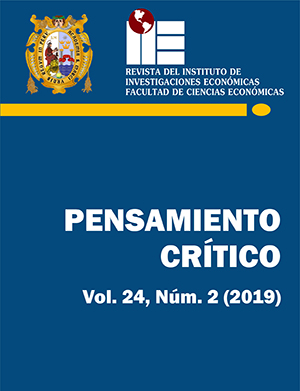Conflict management and territorial competition seen from public management
DOI:
https://doi.org/10.15381/pc.v24i2.17449Keywords:
Conflict management, interjurisdictional differentials, public economyAbstract
Understanding that the problematic of the district limits generates the weakening of collection in property tax, main municipal tax administered by the municipalities according to the Organic Law of municipalities. This is the specific case of the border conflict between the districts of Magdalena del Mar and San Isidro, a situation that has long been the case, and affects the social and economic aspect of the populations and residents, limiting the execution of public works and municipal services such as citizen security in the affected districts. Attempts to solve the conflict by the State only polarize the citizens of both communes and stop living in harmony as if they were bordering countries. The study auscultates the negative axes and how the lack of a public policy management tool increasingly sharpens a political situation and respect for the rule of law, where the authorities involved must submit to a technical decision-making body as is the specific case of the National Geographical Institute, which, by means of geographical coordinates, can delimit the territories in conflict.
Codice (JEL): Conflict management (D74), interjurisdictional differentials (H73), public economy (H80).
Downloads
Published
Issue
Section
License
Copyright (c) 2020 Marianella Pinella Odar

This work is licensed under a Creative Commons Attribution-NonCommercial-ShareAlike 4.0 International License.
THE AUTHORS RETAIN THEIR RIGHTS:
a. The authors retain their trademark and patent rights, and also on any process or procedure described in the article.
b. The authors retain the right to share, copy, distribute, execute and publicly communicate the article published in Pensamiento Crítico (for example, place it in an institutional repository or publish it in a book), with recognition of its initial publication in Pensamiento Crítico.
c. The authors retain the right to make a subsequent publication of their work, to use the article or any part of it (for example: a compilation of their works, notes for conferences, thesis, or for a book), provided they indicate the source of publication (authors of the work, journal, volume, number and date).






